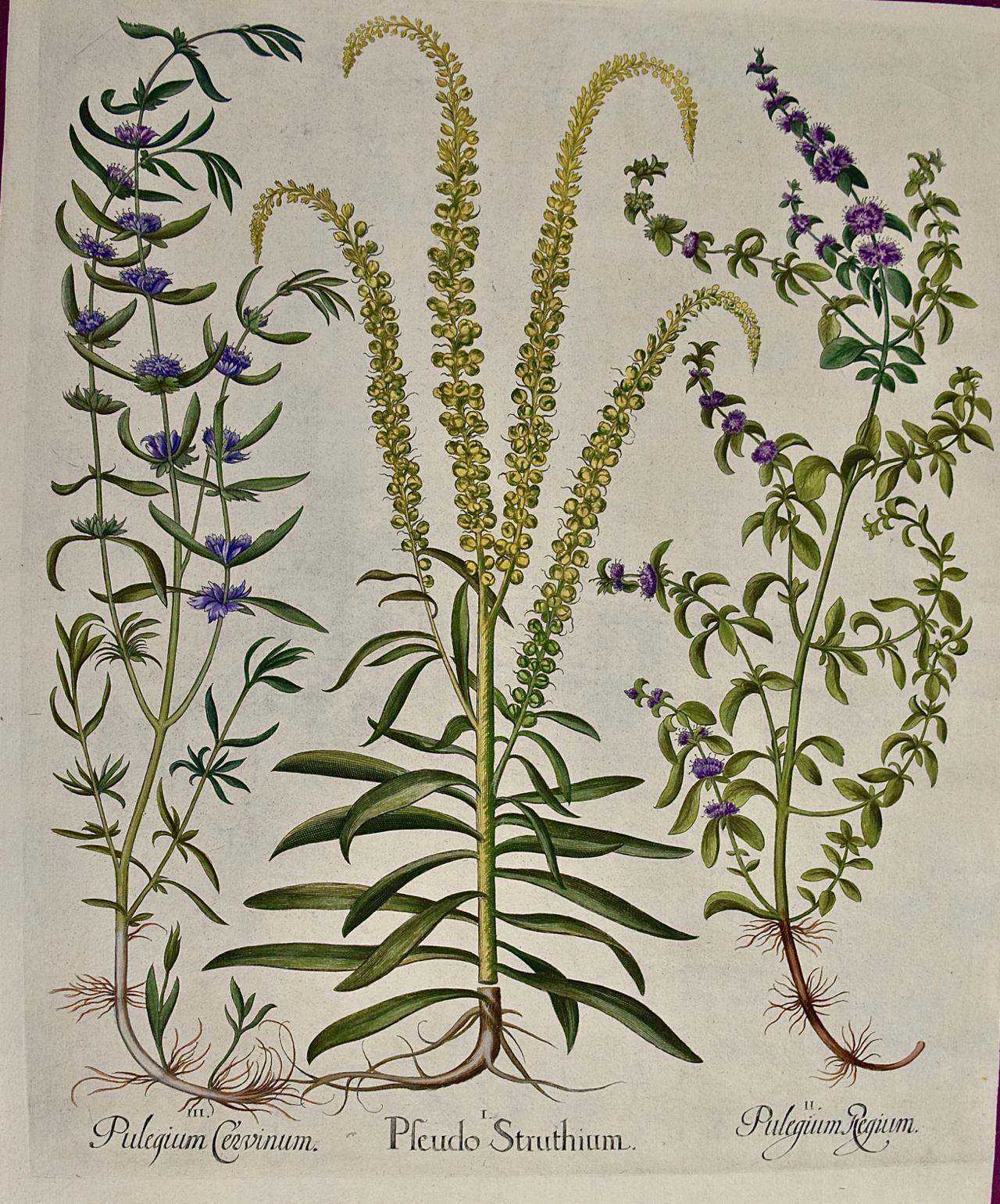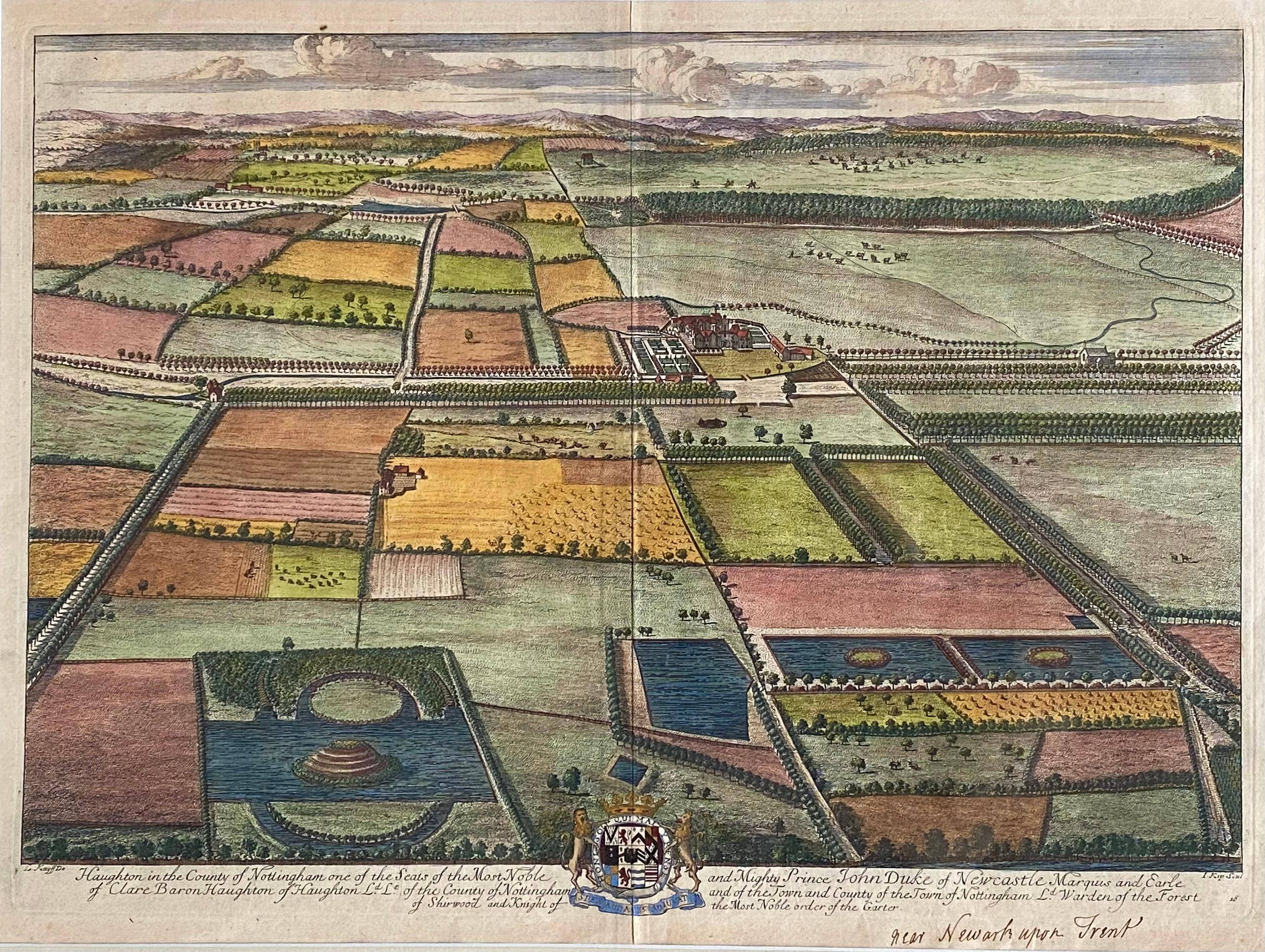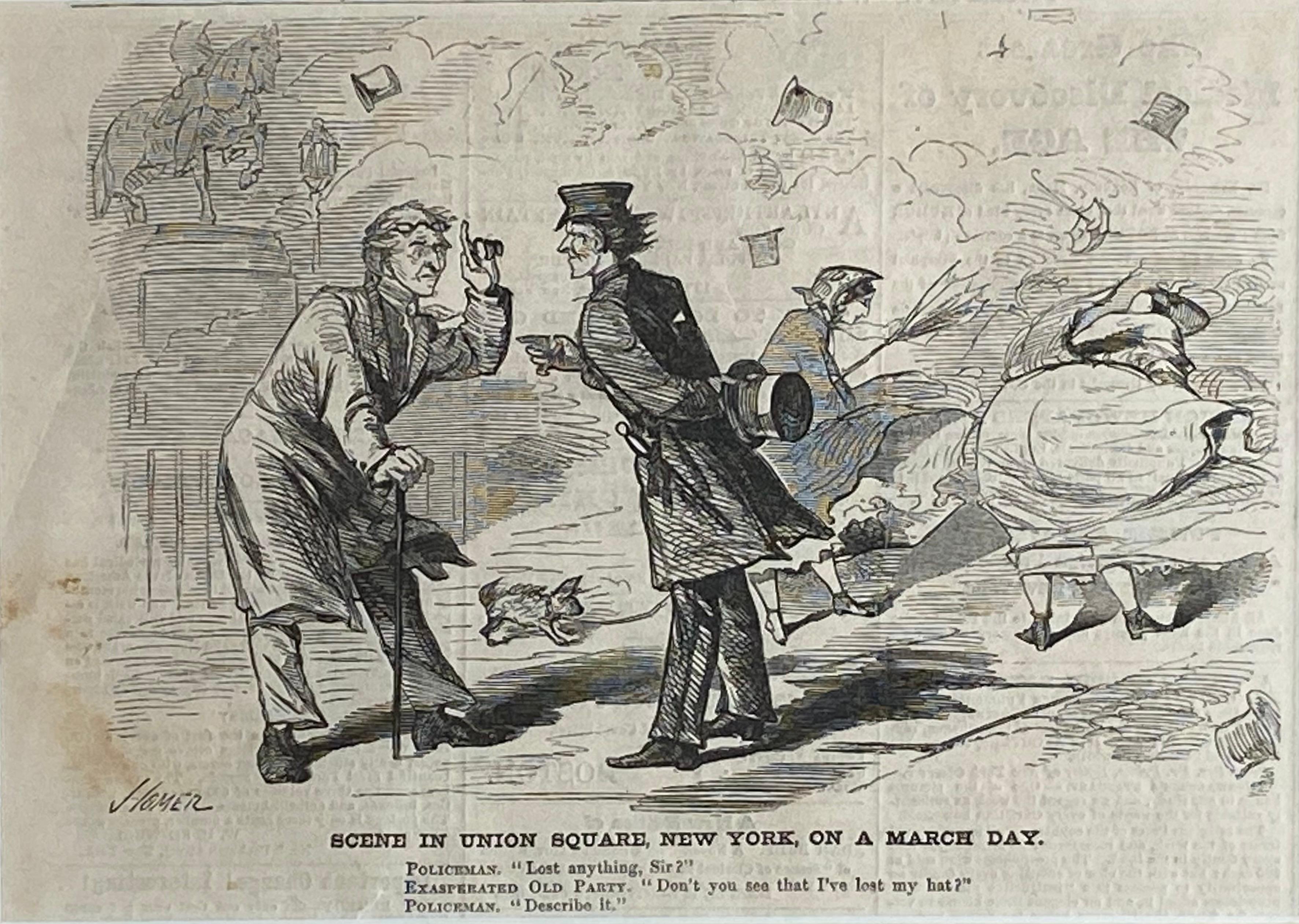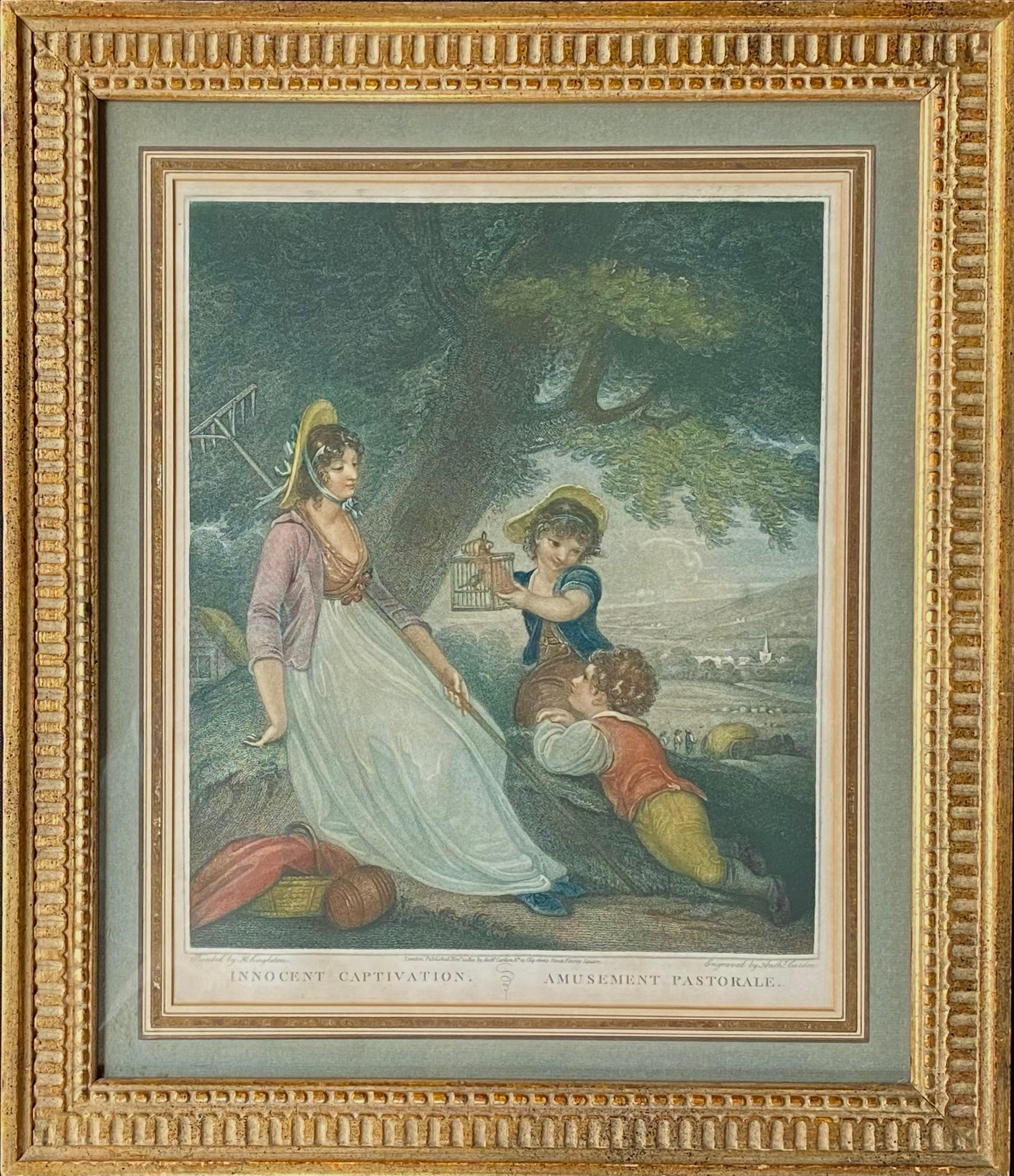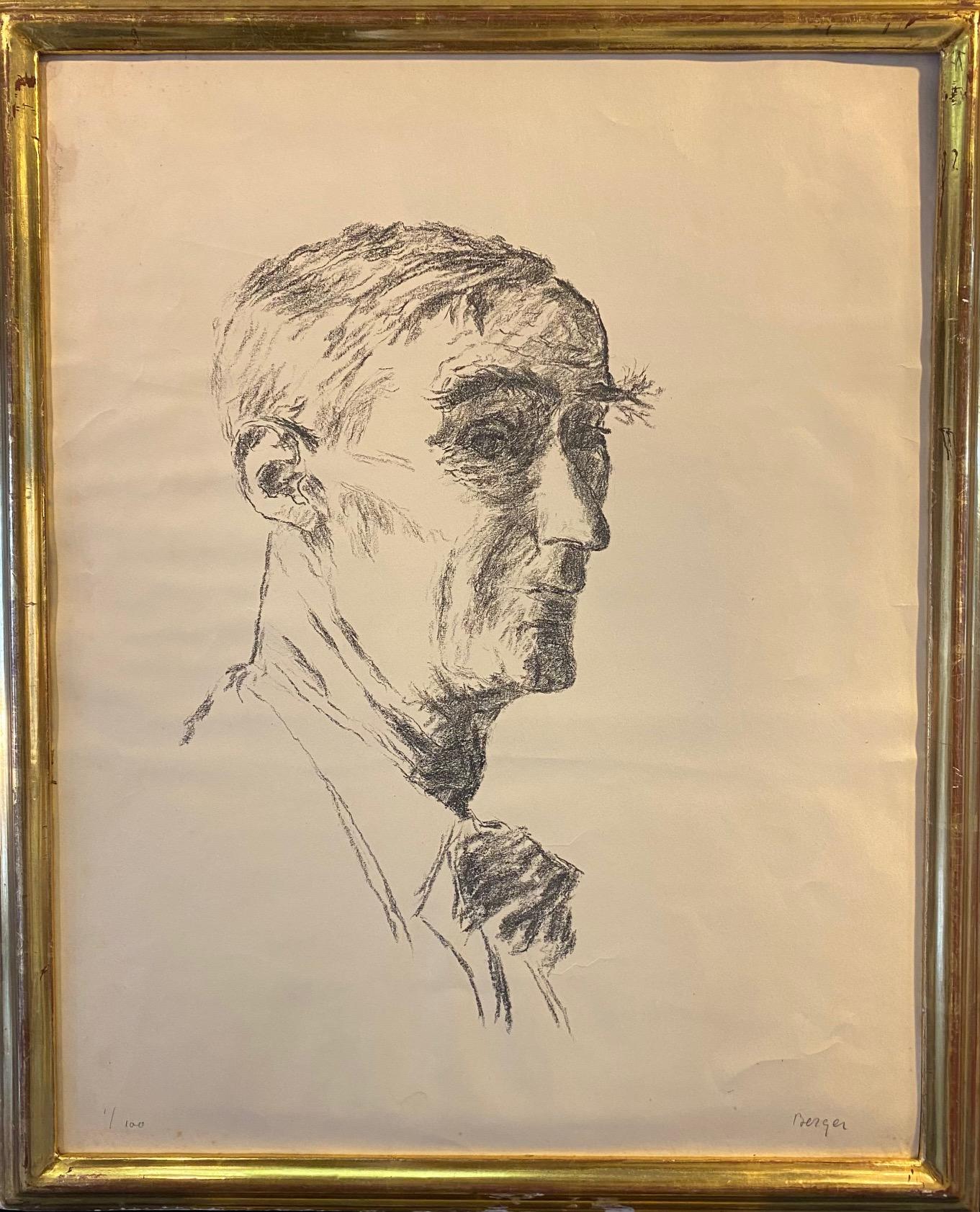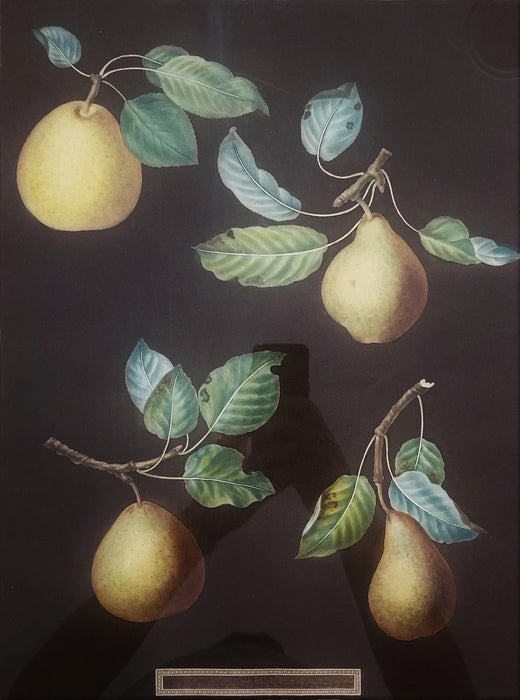George BrookshawPlate 88. Apples.1812
1812
About the Item
- Creator:George Brookshaw (1751 - 1823, British)
- Creation Year:1812
- Dimensions:Height: 33.5 in (85.09 cm)Width: 29 in (73.66 cm)
- Medium:
- Movement & Style:
- Period:
- Condition:Clean, crisp image. Framed to museum specifications using archival matting, backing, hinging. Glazed with ultra-violet filtering Plexiglas.
- Gallery Location:Florham Park, NJ
- Reference Number:
George Brookshaw
George Brookshaw began his artistic career as a teacher of watercolor painting. During the prime of his life, he was a sought-after cabinetmaker, creating finely-painted neoclassical furniture for patrons such as the Prince of Wales (the future King George IV). However, public records about his career disappear in the mid-1790s, about the same time that his prominent marriage collapsed. There is no mention of him until the Pomona Britannica began its release in 1804. Historian Lucy Wood suggests that Brookshaw began a new career in botanical studies under the name G. Brown, author of A New Treatise on Flower Painting, a painting instruction text. Several plates in the 1817 supplement to that work are now attributed to Brookshaw. Plate 27 by George Brookshaw from one of the finest volumes on pomology, "Pomona Britannica or a Collection of the Most Esteemed Fruits at Present Cultivated in Great Britain". Many of Brookshaw’s models came from the Royal Gardens at Hampton Court and Kensington Gardens.
- ShippingRetrieving quote...Ships From: Florham Park, NJ
- Return PolicyA return for this item may be initiated within 1 day of delivery.
- BeansBy Matthäus Merian the ElderLocated in Florham Park, NJMATTHAUS MERIAN, the Elder (1593-1650) Der Fruchtbringenden Gesellschaft Nahmen. Frankfurt, 1646. Engraving with Later Hand-Color. 400 Plates. Image Size 4.5” x 5.25” Unframed. ...Category
18th Century and Earlier Academic Still-life Prints
MaterialsEngraving, Watercolor
- Casa de Crescenzo (Italy)By Antonio AquaroniLocated in Florham Park, NJROMA (Italy) A. Aquaroni. Engraving. Modern Hand-Color. Rome, Italy 1750. Ever wonder what pre-dated the postcard? By the mid-eighteenth century, travel and exploration had be...Category
1750s Academic Prints and Multiples
MaterialsEngraving, Watercolor
- Ponte Gianniculense (Italy)By Antonio AquaroniLocated in Florham Park, NJROMA (Italy) A. Aquaroni. Engraving. Modern Hand-Color. Rome, 1750. Ever wonder what pre-dated the postcard? By the mid-eighteenth century, travel and exploration had become a...Category
1750s Academic Prints and Multiples
MaterialsEngraving, Watercolor
- Acquedotto de Sisto Quinta. (Italy)By Antonio AquaroniLocated in Florham Park, NJROMA (Italy) A. Aquaroni. Engraving. Modern Hand-Color. Rome, Italy 1750. Ever wonder what pre-dated the postcard? By the mid-eighteenth century, travel and exploration had be...Category
1750s Academic Prints and Multiples
MaterialsEngraving, Watercolor
- Bradypus (Three-toed Sloth)By John WilkesLocated in Florham Park, NJJOHN WILKES (1750-1810) Encyclopedia Londinensis after Reinhold and Edwards London, 1801-1828 Copper Plate Engraving Original Hand-Color 9” x11” Unframed At its best, the z...Category
Early 19th Century Academic Prints and Multiples
MaterialsWatercolor, Engraving
- XLII. Ram's Head UrnBy Sir William HamiltonLocated in Florham Park, NJ...Etruscan, Greek and Roman Antiquities.... Hamilton, Sir William. 1730 – 1803. Collection of Etruscan Greek and Roman Antiquities from the Cabinet of the Hon. W. Hamilton. 4 vols. Naples, 1766-7. D’Hancarvills, sculpt. Aquatint Engravings in Black and Terra Cotta Inks. Finishing in Original Hand-Color. In 1764, Sir William Hamilton arrived in Naples to take up his new appointment as British Envoy Extraordinary to the Bourbon Court of King Ferdinand IV. At the time of his arrival, Italy was still a largely untapped field of archaeological discovery and there was ample opportunity for the private individual to amass a collection or 'cabinet' of classical antiquities at relatively little expense. The sites of the buried cities of Pompeii and Herculaneum, although now under Royal control, were still being only haphazardly excavated and were openly vandalized. Hamilton himself complained of the fact, but also seems to have taken advantage of it. Hamilton's first collection was in fact acquired by the British Museum in 1772 where it formed the foundation of the now great collection of Greek and Roman antiquities. This was the first major collection of Greek vases (or, as they were then known, Etruscan) to reach England's shores. "To Hamilton belongs the merit of being the first to appreciate with warmth the severe beauty of their shapes, colouring and drawing, the mingled simplicity and feeling of the designs figured upon them; and it was he who recognized the value of these unpretentious vessels for forming and ennobling modern art-taste". (Adolph Michaelis, Ancient Marbles in Great Britain, Cambridge 1882, p. 110) Hamilton found a worthy ally in Josiah Wedgwood who was setting up a new factory appropriately called "Etruria". Opened in June of 1769, Wedgwood was to use Hamilton's models again and again in his pottery with many designs taken directly from the engravings. Etruscan antiquities...Category
18th Century and Earlier Academic Prints and Multiples
MaterialsEngraving
- Flowering Peppermint Plants: A 17th C. Besler Hand-colored Botanical EngravingLocated in Alamo, CAThis is a hand-colored copper plate engraving entitled "Pulegium Cervinum, Pseudo Pulegium Struthium, Pulegium Regium", depicting flowering Peppermint, Weld and Pennyroyal plants res...Category
1640s Academic Still-life Prints
MaterialsEngraving
- “Haughton in the County of Nottingham” (Near Newark Upon Trent)By Johannes KipLocated in Southampton, NYAn original hand colored engraving by Johannes 'Jan' Kip (1653-1722) of Haughton in the County of Nottinghamshire, one of the seats of Prince John Duke of ...Category
Early 1700s Academic Landscape Prints
MaterialsEngraving
- “Scene in Union Square, New York on a March DayBy Winslow HomerLocated in Southampton, NYOriginal wood engraving on paper. Taken from Harper’s Weekly, April 7, 1860. Signed “Homer” in the plate. Condition is good. Slight staining lower left. Very slight tear to the l...Category
1860s Academic Figurative Prints
MaterialsArchival Paper, Engraving
- “Innocent Captivation Amusement Pastorale”By Anthony CardonLocated in Southampton, NYOriginal stipple engraving on a verge type of hand laid paper. The overall size of the engraving is 15.75 inches by 12.75 inches The image size of the engraving is 14 inches by 12 i...Category
Early 1800s Academic Figurative Prints
MaterialsEngraving, Laid Paper
- Portrait of a man by Hans Berger - Drawing 44x50 cmLocated in Geneva, CHWork on paper Ed: 1 /100Category
Early 20th Century Academic Portrait Prints
MaterialsEngraving, Crayon
- Portrait of woman by Gustave François - Engraving 44x54 cmBy Gustave Francois (Barraud)Located in Geneva, CHWork on paper without frameCategory
Mid-20th Century Academic Portrait Prints
MaterialsEngraving

